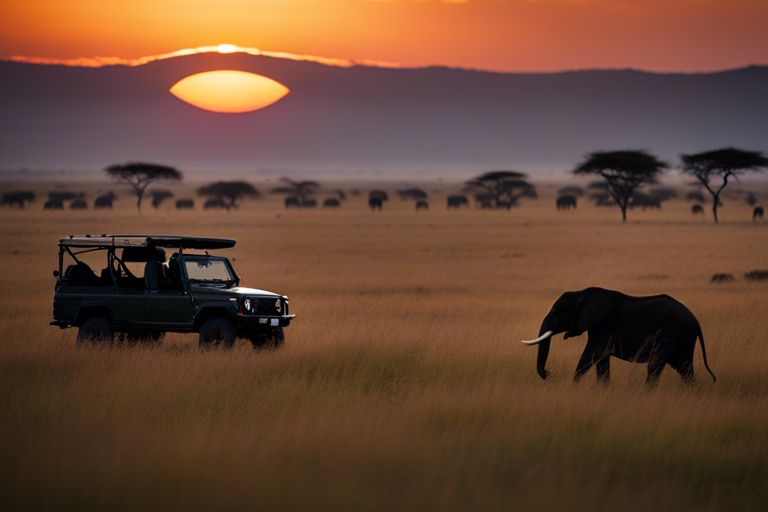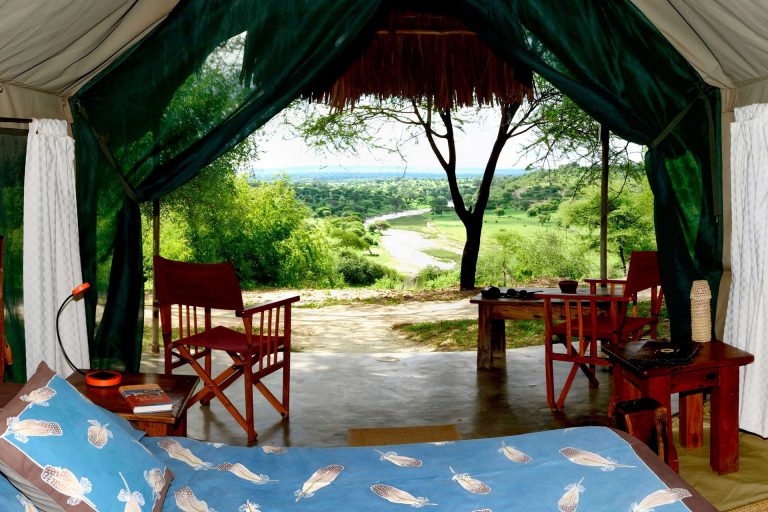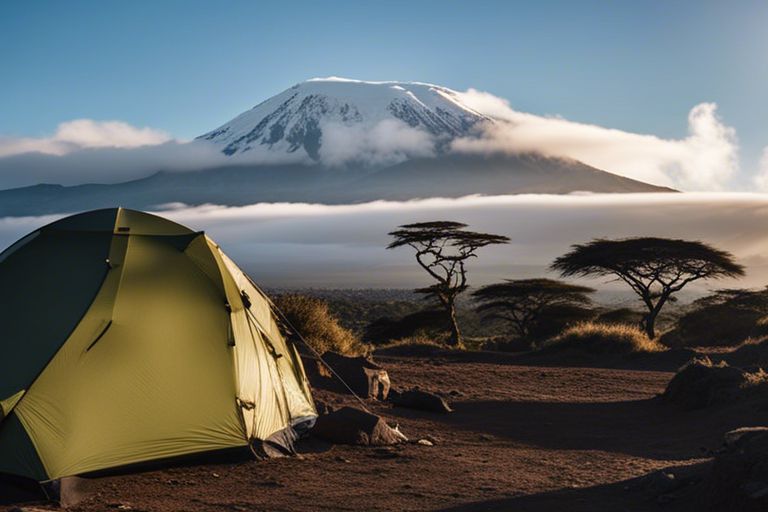Unforgettable Experiences – How To Make The Most Of Your Serengeti Safari
Most of us dream of begining on a once-in-a-lifetime Serengeti safari adventure, but how do you ensure it lives up to your expectations? From witnessing the Great Migration to spotting the Big Five, this guide will provide you with valuable tips and insights on how to make the most of your Serengeti safari experience. Get ready to immerse yourself in the stunning landscapes, rich wildlife, and unique culture of this iconic African destination!
Planning Your Serengeti Safari
Choosing the Right Time of Year
For an unforgettable experience on your Serengeti safari, you’ll want to choose the right time of year for your visit. While wildlife can be spotted year-round in the Serengeti, the best time to witness the Great Migration is typically from late June to August when millions of wildebeest, zebras, and antelopes move across the plains in search of greener pastures. If you prefer fewer crowds, the months of January and February are also great for game viewing as it is the calving season, offering a unique opportunity to see baby animals in the wild.
Selecting a Reputable Tour Operator
For a stress-free and well-organized safari experience, it’s imperative to select a reputable tour operator. With so many options available, it’s crucial to do your research and choose a company with a good track record, knowledgeable guides, and positive reviews from past travelers. Look for operators that prioritize sustainability and responsible tourism practices to ensure your visit has a positive impact on the local environment and communities.
When opting for a tour operator for your Serengeti safari, consider factors such as the size of the group, the type of accommodations offered, and the level of expertise of the guides. A smaller group size can provide a more personalized experience, while knowledgeable guides can enhance your wildlife viewing opportunities and provide valuable insights into the ecosystem.
Packing Essential Gear and Clothing
Clothing plays a crucial role in ensuring a comfortable and enjoyable safari experience in the Serengeti. Pack lightweight, breathable clothing in neutral colors such as khaki, beige, and olive green to blend in with the natural surroundings and avoid attracting insects. Don’t forget to pack a wide-brimmed hat, sunglasses, and sturdy, closed-toe shoes for game drives and bushwalks.
It’s also imperative to pack imperative gear such as a good camera with zoom capabilities to capture stunning wildlife moments, binoculars for bird watching, and a reusable water bottle to stay hydrated during your adventures. Consider packing a daypack to carry your imperatives during excursions and a light jacket for cool mornings and evenings in the bush.
Preparing for the Unexpected
Understanding Serengeti Weather Patterns
One of the most important things to consider when preparing for your Serengeti safari is understanding the weather patterns of the region. The Serengeti experiences two distinct seasons – the dry season and the wet season. The dry season, from June to September, is characterized by cooler temperatures and sparse vegetation, making it an ideal time for wildlife viewing. On the other hand, the wet season, from November to May, brings heavy rains which can make roads impassable and hinder game viewing.
Dealing with Insect-Borne Illnesses
Insect-borne illnesses such as malaria and dengue fever are a concern in the Serengeti. It is important to take preventive measures such as using insect repellent, wearing long sleeves and pants, and taking antimalarial medication. If you experience any symptoms such as fever, chills, or body aches, seek medical attention immediately.
Unexpected encounters with insects can happen, but being prepared and taking precautions can help minimize the risk of contracting any illnesses during your safari.
Staying Safe in the Wild
For a safe and enjoyable safari experience, it is crucial to stay vigilant and follow the guidelines provided by your tour guide. Avoid getting too close to wild animals, do not attempt to feed them, and always listen to your guide’s instructions. In case of an emergency, know how to contact park authorities or seek help from nearby lodges.
A deep understanding of wildlife behavior and proper safety measures will ensure that you have a memorable and incident-free safari in the Serengeti.

Maximizing Your Wildlife Encounters
Tips for Spotting the Big Five
Unlike other safaris around the world, a Serengeti safari offers you the chance to spot the Big Five – lions, leopards, elephants, buffalos, and rhinos – in their natural habitat. To increase your chances of spotting these majestic animals, consider hiring a knowledgeable guide who knows the best spots and times for wildlife sightings. Additionally, be patient and keep your eyes peeled, as these creatures can sometimes be elusive.
- Arrive at the national park early in the morning or late in the afternoon, as animals tend to be more active during these times.
- Listen for alarm calls from other animals, as they can indicate the presence of predators nearby.
- Respect the animals’ space and avoid making sudden movements or loud noises to prevent scaring them away.
After a successful day of spotting the Big Five, take a moment to appreciate the beauty and diversity of wildlife that the Serengeti has to offer.
Understanding Animal Behavior and Habitat
Encounters with wildlife in the Serengeti go beyond simply spotting animals – it involves understanding their behavior and habitat. By learning about the habits and movements of different species, you can anticipate where they might be and increase your chances of memorable sightings. Animals are often found near water sources, grazing areas, or shaded spots during the heat of the day.
Another key aspect of maximizing your wildlife encounters is to respect the animals’ natural habitat and avoid disturbing their routines. By observing from a safe distance and following park regulations, you can ensure that both you and the wildlife have a positive experience.
Getting the Best Photographs
Encounters with wildlife in the Serengeti provide incredible opportunities for capturing breathtaking photographs. To get the best shots, make sure to pack a quality camera with a zoom lens to capture animals from a distance. Patience is key when it comes to wildlife photography, so be prepared to wait for the perfect moment to snap your shot.
Animal behavior can be unpredictable, so be ready to adjust your settings quickly to adapt to changing conditions. Remember to focus on the animals’ eyes, as they can convey emotion and add depth to your photos.
Making the Most of Your Safari Vehicle
Choosing the Right Vehicle for Your Needs
All safari vehicles are not created equal, so it’s necessary to choose one that fits your needs. From open-top jeeps for unobstructed views to closed vehicles for added protection, there are various options available. Consider factors such as comfort, photography opportunities, and group size when selecting the right vehicle for your safari adventure.
How to Get the Best Views from Your Vehicle
Making the most of your safari experience includes getting the best views from your vehicle. Sit near the windows or on the rooftop for unobstructed sightlines of the wildlife and breathtaking landscapes. Be prepared to move around within the vehicle to capture the perfect shot, and don’t be shy to communicate with your guide to reposition the vehicle for optimal viewing opportunities.
This will ensure that you don’t miss any of the incredible sightings during your Serengeti safari.
Staying Comfortable on Long Drives
Staying comfortable during long drives is key to fully enjoying your safari experience. Opt for a vehicle with comfortable seating, ample legroom, and good suspension to minimize bumpiness during off-road excursions. Dress in layers to adjust to the changing weather conditions, and don’t forget necessarys like a hat, sunscreen, and plenty of water to stay hydrated throughout the journey.
Your comfort is necessary for making the most of your Serengeti safari, so prioritize your well-being during the adventure.
Factors to Consider for a Successful Safari
Physical Conditioning and Mobility
To ensure a successful safari in the Serengeti, it is imperative to consider your physical conditioning and mobility. The terrain can be rugged, and you may encounter long hours of driving or walking during game drives. It is important to be in good physical health to fully enjoy the experience. Make sure to consult with your healthcare provider before launching on your adventure to ensure you are physically prepared.
Clearly communicate any mobility concerns or limitations to your tour operator or guide before your safari. They can provide accommodations and options to ensure you are able to fully participate in the activities. Taking the time to prepare physically will allow you to make the most of your time in the Serengeti and create unforgettable memories.
Mental Preparation and Flexibility
Factors such as unpredictable weather, wildlife behavior, and other variables can impact your safari experience. Mental preparation and flexibility are key to handling any unforeseen circumstances that may arise during your trip. Keep an open mind and be prepared for changes in the itinerary to make the most of your Serengeti safari.
This mindset will allow you to adapt to any situation and fully immerse yourself in the natural beauty and wildlife of the Serengeti. Embracing the unpredictability of safari life can lead to unexpected adventures and unique opportunities to witness the wonders of the wild.
Budgeting and Cost-Effective Planning
An important factor to consider for a successful safari is budgeting and cost-effective planning. Research different tour options and compare prices to find a safari package that fits your budget. Consider all expenses, including accommodations, transportation, park fees, and other additional costs to avoid any financial surprises during your trip.
By carefully budgeting and planning your expenditures, you can ensure a smooth and stress-free safari experience. Look for special deals or off-peak season offers to help you save money without compromising the quality of your adventure in the Serengeti.
Enhancing Your Safari Experience
How to Engage with Local Guides and Trackers
Many travelers often underestimate the value of local guides and trackers in the Serengeti. These experienced individuals have a wealth of knowledge about the wildlife, terrain, and local customs. Engaging with them can greatly enhance your safari experience. Don’t hesitate to ask them questions, share your curiosity, and learn from their insights. You’ll be amazed at the stories they have to tell and the information they can provide.
Learning About Serengeti Ecosystems and Conservation
Any safari experience in the Serengeti should include a focus on learning about the delicate ecosystems and conservation efforts in the region. Understanding the interconnectedness of flora and fauna, as well as the challenges they face, can deepen your appreciation for this unique environment. Your local guides and trackers can offer valuable insights into conservation projects and the importance of preserving the Serengeti for future generations.
With its vast plains, diverse habitats, and rich biodiversity, the Serengeti offers a prime opportunity to learn about ecosystems and conservation firsthand. By immersing yourself in this knowledge, you can develop a greater understanding of the impact of human activities on the environment and ways in which responsible tourism can help protect this natural wonder.
Enjoying Local Cuisine and Hospitality
One of the best ways to immerse yourself in the local culture of the Serengeti is by enjoying traditional cuisine and hospitality. Local dishes, prepared with fresh and flavorful ingredients, offer a taste of the region’s rich culinary heritage. Whether you’re dining at a campsite, lodge, or with local communities, savoring the local cuisine is an necessary part of your safari experience.
A trip to the Serengeti is not just about wildlife sightings; it’s also about connecting with the people who call this place home. Through shared meals, warm hospitality, and cultural exchanges, you can gain a deeper appreciation for the vibrant community that thrives in this wild landscape. Embrace the opportunity to taste local flavors and forge connections that transcend language barriers.
Summing up
Considering all points, a Serengeti safari can truly be a once-in-a-lifetime experience if you make the most of it. By choosing a reputable tour operator, being prepared for the wildlife sightings, immersing yourself in the local culture, and capturing memories through photography, you can ensure that your safari in the Serengeti is unforgettable. It is important to respect the environment and wildlife, follow safety guidelines, and be open to new experiences to fully appreciate all that the Serengeti has to offer.
Whether you dream of witnessing the Great Migration, encountering the Big Five, or simply admiring the breathtaking landscapes, a Serengeti safari has something for every nature enthusiast and adventure seeker. By following these tips and recommendations, you can maximize your experience and create lasting memories that will stay with you long after your safari has ended.







